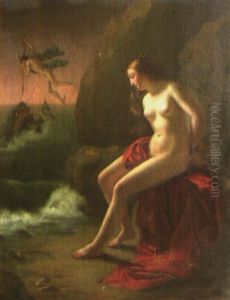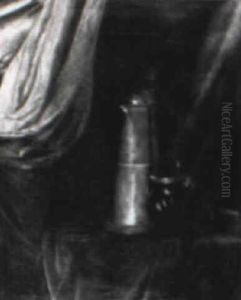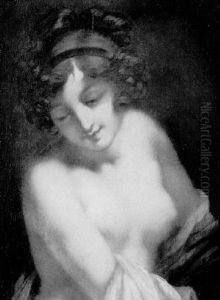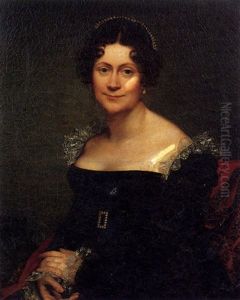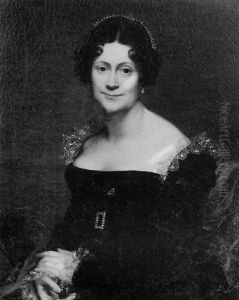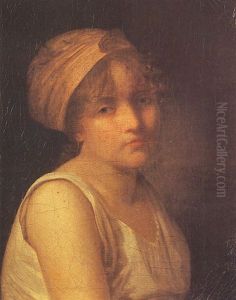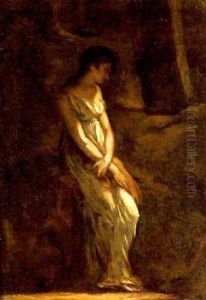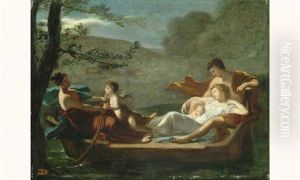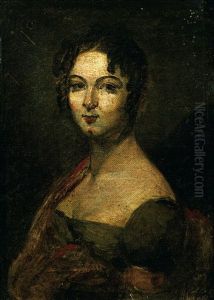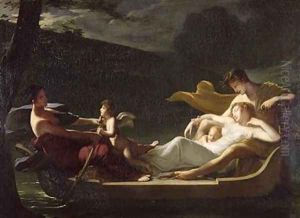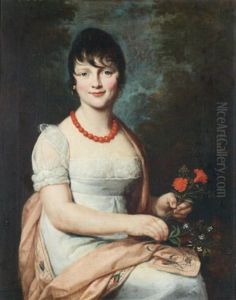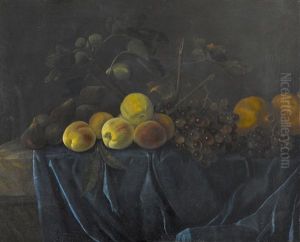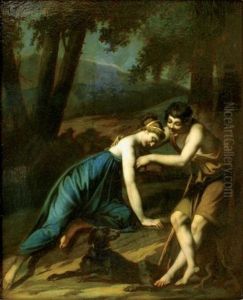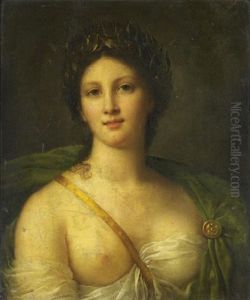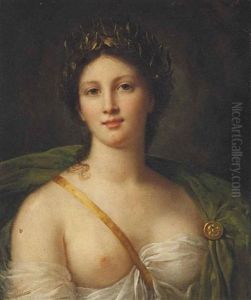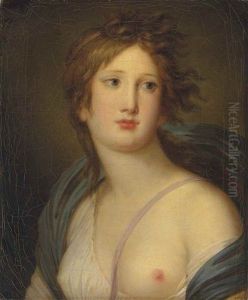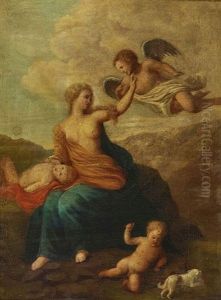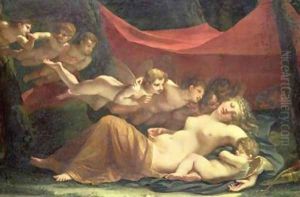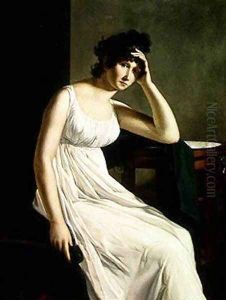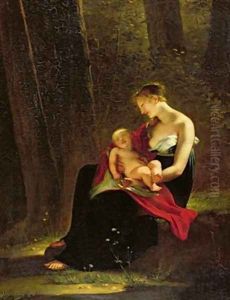Constance Marie Mayer-Lamartiniere Paintings
Constance Marie Mayer was an influential French painter born in 1775. Little is known about her early life, but she emerged as a significant artist in the late 18th and early 19th centuries, a period marked by profound political and social changes in France, including the French Revolution and the Napoleonic Wars. Mayer was one of the few women of her time to gain recognition in the predominantly male art world, making her contributions especially noteworthy.
Mayer's artistic journey began under the tutelage of Jean-Baptiste Greuze, a prominent French painter known for his sentimental and moralizing subjects. However, she is most famously associated with Pierre-Paul Prud'hon, a painter whose work bridged the Neo-Classical and Romantic movements. Prud'hon's influence on Mayer was profound, both personally and professionally; their partnership was a blend of collaboration and mentorship, with Mayer often assisting Prud'hon on large projects and commissions. Despite her collaborations, Mayer developed her own distinct style, characterized by a delicate use of color and a focus on themes of romance, motherhood, and the intricacies of women's lives.
Mayer's works were well-received by her contemporaries, and she exhibited at the prestigious Paris Salon on multiple occasions. Her paintings, such as 'The Dream of Happiness' and 'Love and Innocence,' reflect her keen ability to depict emotional depth and the subtleties of human expression. Unfortunately, despite her talent and the initial acclaim she received, Mayer's contributions were overshadowed by those of her male counterparts and her mentor-collaborator Prud'hon.
Tragically, Mayer's life was cut short when she died by suicide in 1821, a reflection of the personal struggles she faced. In the years following her death, her achievements were largely forgotten, and it was not until the late 20th and early 21st centuries that art historians began to re-evaluate her work and contribution to art history. Today, Constance Marie Mayer is recognized for her role in the development of early 19th-century French painting and for breaking gender barriers in the art world of her time.
